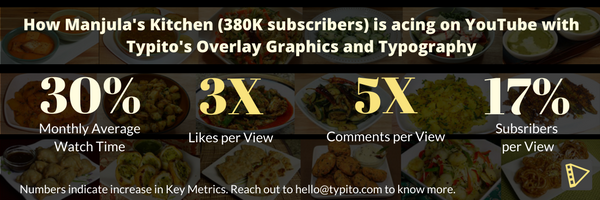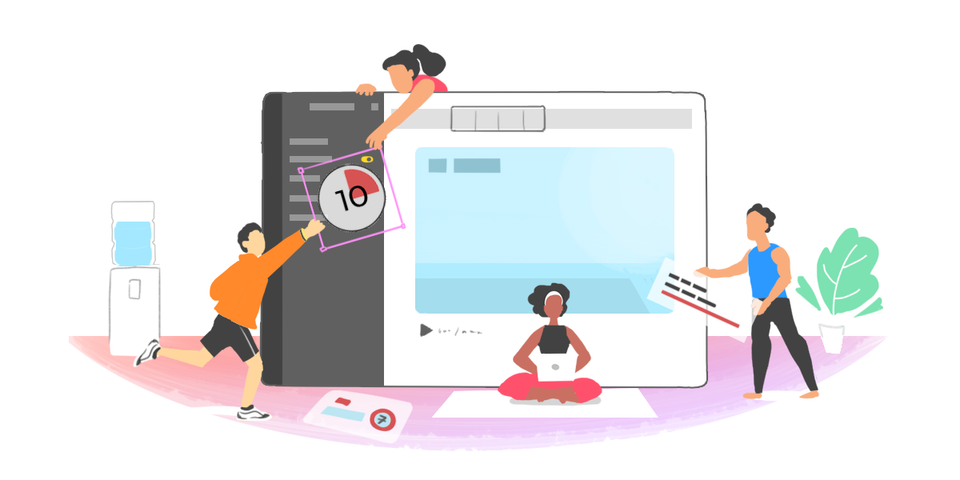An Acclaimed Method to Understand YouTube Viewers Better
In the early days of launching a YouTube channel, you don't really know who you are making these videos for, you are not sure who the viewers would be, what they like, and what they are looking for.
It's only after your audience has grown and starts engaging with you that you start figuring out who they are and what their motivations are. So, what do you do in the early days? How do you figure out who you are making videos for and how do you know why they are watching your videos?
One of the popular methods used by entrepreneurs and start-ups is the Jobs-to-be-done methodology. It is a framework put forward by Harvard professor Clayton Christensen and has helped hundreds of start-ups solve the right problems and make hit products.
Jobs-to-be-done says that people hire products to solve a particular problem they are faced with. Christensen shares the story of a fast-food restaurant chain that wanted to improve its milkshake sales. The company enlisted the help of one of Christensen's fellow researchers, who approached the situation by trying to deduce the "job" that customers were "hiring" a milkshake to do.
First, he spent a full day in one of the chain's restaurants, carefully documenting who was buying milkshakes, when they bought them, and whether they drank them on the premises. He discovered that 40 percent of the milkshakes were purchased first thing in the morning, by commuters who ordered them on the go.
The next morning, he returned to the restaurant and interviewed customers who left with a milkshake in hand, asking them what job they had hired the milkshake to do. Christensen details the findings in a teaching note, "Integrating Around the Job to be Done."
"Most of them, it turned out, bought [the milkshake] to do a similar job," he writes. "They faced a long, boring commute and needed something to keep that extra hand busy and to make the commute more interesting.
They weren't yet hungry, but knew that they'd be hungry by 10 a.m.; they wanted to consume something now that would stave off hunger until noon. And they faced constraints: They were in a hurry, they were wearing work clothes, and they had (at most) one free hand."
The milkshake was hired in lieu of a bagel or doughnut because it was relatively tidy and appetite-quenching, and because trying to suck a thick liquid through a thin straw gave customers something to do with their boring commute.
Understanding the job to be done, the company could then respond by creating a morning milkshake that was even thicker (to last through a long commute) and more interesting (with chunks of fruit) than its predecessor. The chain could also respond to a separate job that customers needed milkshakes to do: serve as a special treat for young children-without making the parents wait a half-hour as the children tried to work the milkshake through a straw. In that case, a different, thinner milkshake was in order.
Applying Jobs-to-be-done to YouTube
What are some of the reasons people "hire" a YouTube video for?
Cook something new and Indian.
I feel like watching/reading something that engages my brain.
I'm drunk and need to watch something really silly.
Get reviews for a headset that I intend to buy, not something out of my budget that I can just watch and drool.
In the first (1) case you would probably "hire" Manjula's Kitchen to do the job. In the second scenario, you may want to go for Nerdwriter or Kurzgesagt that puts forward interesting ideas with engaging videos. In the third one, while you may have a range of options, my favorite happens to How to Basic. For case 4, I have not come across quality channels that review headphones that are affordable, like a Sony MDR XB-50. So there is a scope for a channel that reviews headphones that normal people can buy without breaking their bank.
By understanding why your viewers are coming to your channel or what they expect from a YouTube channel in a particular context, you can make videos that solve that specific problem. This will help you understand what parts of your video to focus on. For example, if it's a cooking channel that makes familiar dishes, you can say for certain that the video SEO needs to be of superior quality. This is why people take this free seo course to make sure their video SEO is as good as it can be. People may not look for specific cooking channels, but instead, use Google search and YouTube search to get to where they want. A friend of mine owns a business and recently worked with a Richmond SEO company. He's now boosted his ranking on Google and has more sales than ever! SEO really is important in the world of the internet. The power of SEO is that it can increase internet traffic, boost revenue, and spread your brand throughout the internet, and it is easy for businesses or independent people to do it if they go through companies like South Lake SEO for continued support with this type of marketing strategy.
When you do this activity, you would realise that you are not only competing with other YouTube channels for the attention of an individual. For example, to get reviews of an affordable headset, it's not necessary that I watch a YouTube video. I could rely on magazines and blogs that go deep into the topic. Similar is the case with (2). I could read a book or watch a documentary if it's something engaging for the brain that I want. This kind of an analysis helps you understand the effort that is needed to make someone watch your YouTube video
How we Used Jobs-to-be-done to Improve Manjula's Kitchen
Popular cooking channel Manjula's Kitchen was already growing at a steady pace when we started working with her. She wanted to accelerate the growth of the channel from a steady upward curve to a sharper, steeper rise. We talked to a couple of her viewers to figure out in what context they watch Manjula's Kitchen, what "job" did they "hire" a Manjula's Kitchen video to do? We found out that a lot of viewers watched the video with the intent of cooking what they saw, and sometimes they found it difficult to follow the recipe. They had to replay a couple of parts of the video to get parts of the recipe right. We realised that one of the things that were missing from the videos was text that describes important parts of the video. Such as the name of the dish and more importantly the ingredients and their measures.
We used the online tool we have made, Typito to add text on Manjula's Kitchen. We kept a close eye on what happened with each video. These were the results 10 months after we started our collaboration with the wonderful Manjula.

We have continued to work with Manjula's Kitchen and it has helped us understand the specific reasons for which a viewer will "hire" a YouTube video.
We would love to know your feedback on using Jobs-to-be-done method to understand your viewer's better. Do you think it's something that's worth testing out?




